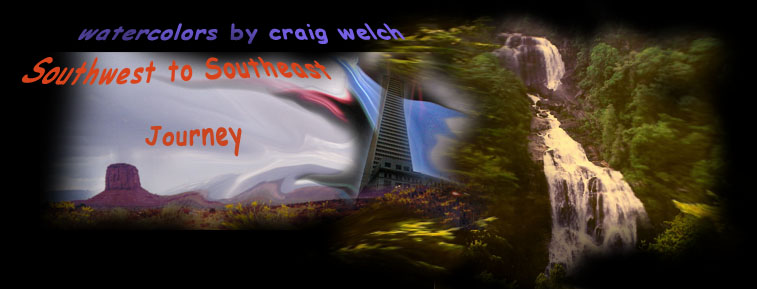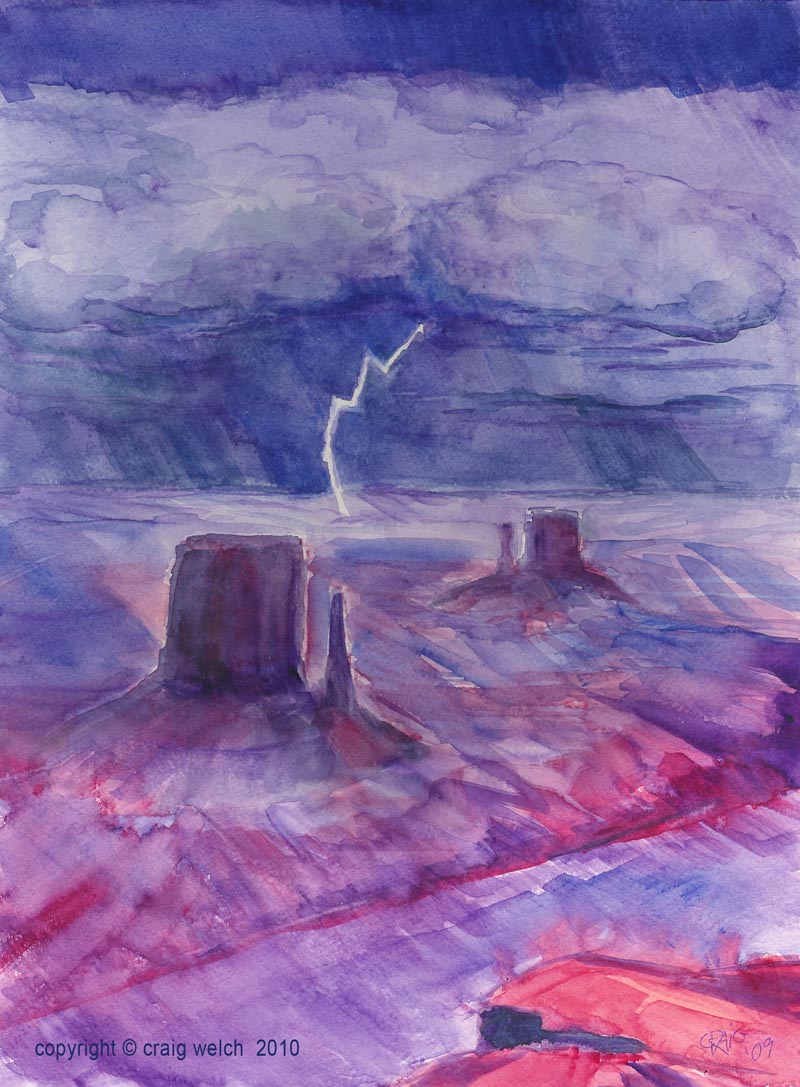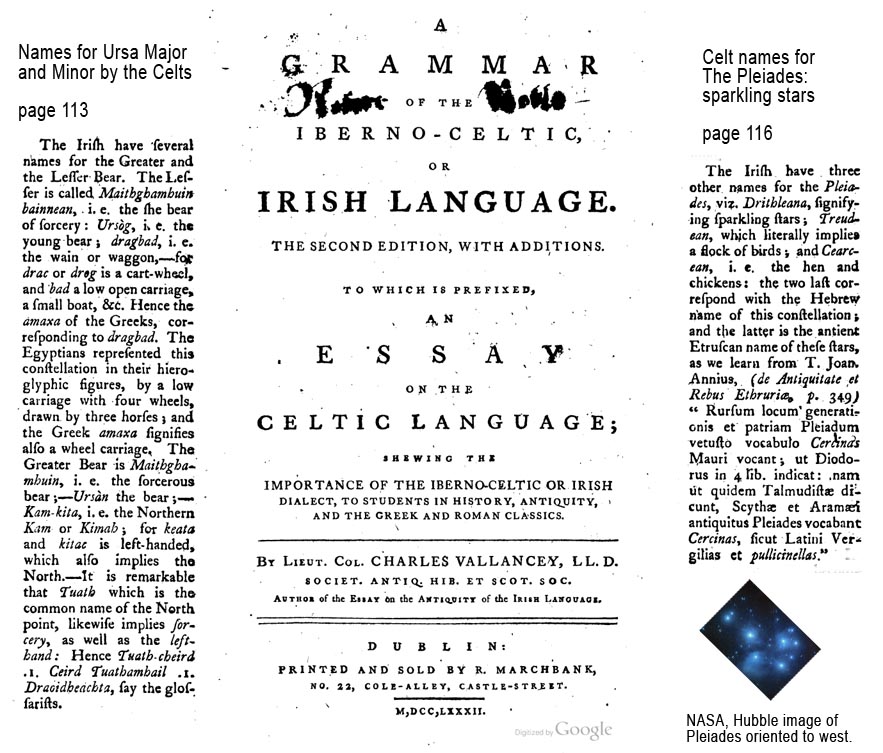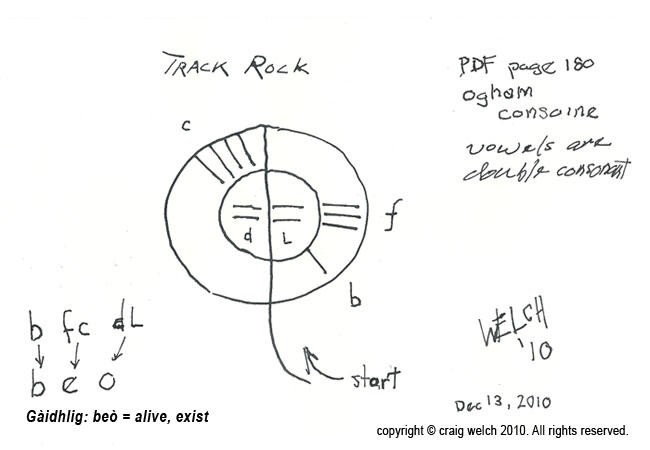|
Notes on Seasons and Rituals of Irish Celts.
(From Col. Charles Vallancey, "A Grammar of the Iberno-Celtic, or Irish Language," 1782. pp. 138-40.)
"The month of May was sacred to Belus, and is still called Mi-mheasmach or the
month of the beautiful offspring; and, with respect to the next great division
of the year by quarters, it is called Mi-meodhain-samhradh, or the middle
month of summer.
"The month of May was sacred to Belus, and is still called Mi-Baltinne, the
month of Baal's fire. In this month all criminals were tried, and the guilty
burn to death, eidir Bheiltinne, between two fires of Baal: This execution
was probably mistaken by Caesar for human sacrifices amongst the Gauls.
"During this solemn festival, marriages were forbidden: It was called the month of Mai,
Maidh, or Maith, which signifies mystery or sorcery. Maith-eas is explained by
the old Irish glossarists by Mai-fhios, i.e. druidheacht, i.e. the knowledge of
Mai, or Druidical Mystery. The games institued in honour of these, were called
May-games, and are still imitated by mummers and such-like processions, the
youths being always armed, denoting bloodshed. Marriage was not only forbidden,
but all persons married in the preceding year, were obliged to appear and account
for their behaviour The women walked in procession, led by a person bearing a
circle ornamented with flowers, and in the midst was suspended a ball of golden
tissue and another of silver, in honour of Belus and the Moon; the latter part
of this ceremony is still preserved in Ireland. The name of the year, as I have
observed, is in Irish Bliadhain, corrupted from Bal-di-ain, or the ring or orbit
of the god Baal: The
name of a planet is an, probably from ain, but the title Di-ana, given to the
moon, is certainly of this Celtic origin, which signifies the god of planets.
Re is also the moon, and rean, a star, which is to say, the moon's planet;
thus she was called the Queen of heaven, the Queen of the planets. The Irish
have another name for a star, as re-alt, i.e. the high moon; these are the
stars in the great expanse, whose orbits are not known, and this name evidently
shows the knowledge the antient Irish had of astronomy. From ain, a ring or orbit,
is drived the Latin annus and annulus. "
[N.B. - my notes 2010. The modern Gaelic dictionary meaning of "druidheacht" is:
druidheachd - charm, conjuration, enchantment, magic - (fem)
also "drithleann" - gleam - (fem) used denoting the Pleiades]
November-December: black and holy.
(from Col. Charles Vallancey, p.143)
"Mi-deireannac-d'fhombradh, i.e. the last month of harvest.
November is called Naoi-mi or ninth month, and also
Mi-dhu, i.e. the black month [N.B. - my note 2010. Modern Gaelic "dubh" means "black."],
and Cead-mhi-do-geimhradh, i.e. the first month of winter.
December is named Deic-mi, or the tenth month, and Mi-chru-mdu,
i.e. the most black and holy month; and also Mi-meodhain an geimhradh,
the middle month of winter. N.B. November was also sacred to
druidical ceremonies, and dedicated to Baal-Samen, which
day now falls on the eve of All-Saints, and is called
oidhche Shamna (or ee owna). On the first of November
a fire was kindled for summoning all the Druids to meet,
in order to sacrifice to Baal-Samen. They burnt the sacrifice
in that fire, nor was there any other fire to be kindled
in Ireland that night. All fires were rekindled from
the holy fire, on paying a tribute to the chief Druid.
This festival was called Tlachagha, which signifies orbit;
it was meant to express that Belus, or the sun, had
completed half his course. The Irish have dropped this annual
fire, but it is still preserved in Scotland and in Wales;
the latter know not the origin of it."
|



